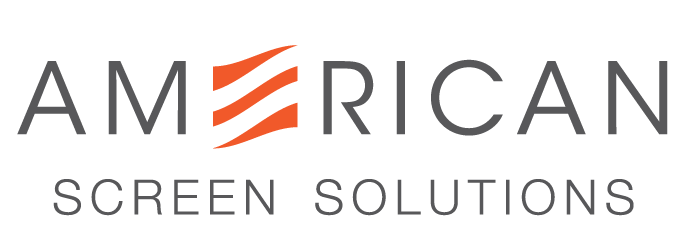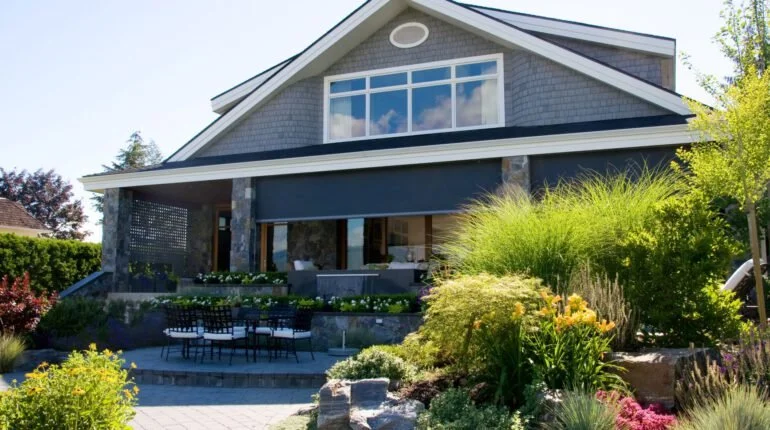All You Need to Know: Solar Mesh
If you live in South Florida, chances are you are no stranger to the intense sunlight and heat that the sunshine state is known for. While the Florida sun can be refreshing during some times in the year, at other times it can be nearly unbearable when it combines with the humidity. So, how does one ward off the severe solar glare when the air conditioning just doesn’t seem to be enough? Below, we discuss the distinct advantages offered by solar meshes for door and window screens, such as the unique solar screens material that allows them to work so effectively, and the differences between solar meshes and other types of screen mesh.
Mitigate Solar Flare and UV Rays
The term “Solar Mesh” refers our Phantom Retractable Screens that are designed with the goal of preventing two things: solar glare and UV rays. By solar glare, we mean the more physical component of sunlight — the intensity of the natural light which finds its way into your home. These solar rays can give you a nice tan when taken in at a safe level, but can lead to sunburn if too much is absorbed into the skin. In the same vein, UV rays are invisible to the naked eye, but can still cause significant damage to human skin when absorbed for too long. The distinction here is crucial, as some screens are more effective at blocking one more than the other, but typically speaking, all solar meshes should mitigate both solar rays and UV rays by a significant margin thanks to their lower level of openness relative to Insect Meshes and other screens that emphasize air flow.
Keep the natural lighting in and the harmful UV rays out with a Phantom solar mesh screen!
What’s In A Mesh: Materials and Fabric
Depending on a mesh’s characteristics such as the material composition of the fabric, the quality of the different components of the screen, or the tightness of the weave, the effectiveness of the solar mesh at reducing or mitigating both solar glare and UV rays can vary. These factors must be considered when selecting the ideal mesh for your needs.
From the materials it is composed of to the diameter of the yarn, no two types of solar mesh are built exactly the same. The first characteristic to consider is the openness of the mesh. A higher level of openness means the screen will offer increased airflow, sunlight, and visibility. Insect Meshes typically possess a high percentage openness. On the other hand, a lower level of openness means the screen will offer better protection against sunlight and smaller insects, as well as impede one’s ability to look through it.
A medium level of openness (typically around 25%) is designed to specifically target solar glare and UV rays, offering up to 80% blockage depending on the screen. It’s important to note the material composition behind the construction of the fabric, as this can also determine not only how effective the screen is at blocking sunlight but how durable it is when facing the elements. Phantom’s Suntex 80 Premium Solar Mesh is constructed entirely with PVC (Vinyl) Coated Polyester, provides the durable and long-lasting resistance it is known for. Note how the “80” in “Suntex 80” denotes the effectiveness of its solar protection; this is a common naming convention amongst Solar Meshes (e.g. Suntex 80 vs. Suntex 90).
Style and Aesthetic
Differing solar meshes can offer unique stylistic options depending on their design. One manufacturer’s solar mesh may be limited to a specific array of colors, while another’s may be limited to a certain maximum width, so it’s important to pay attention to the affordances of a given solar mesh depending on the your home’s needs. For example, Phantom’s Suntex 80 Premium Solar Meshes come in four color offerings — Black, Grey, Brown, and Stucco — while the Phantom SheerWeave 1000 Solar Mesh comes in only two, White and Antique White.
We recommend taking time to consider what features and characteristics your ideal Solar Mesh screen possesses. If you’re interested in a Solar Mesh screen for your home, please contact us today for a free estimate so we can help find the best solution for you. Our Phantom Screens Premium Solar Meshes are designed from the ground up to mitigate the harsh Florida sun’s solar glare and damaging UV rays by up to 80%.



